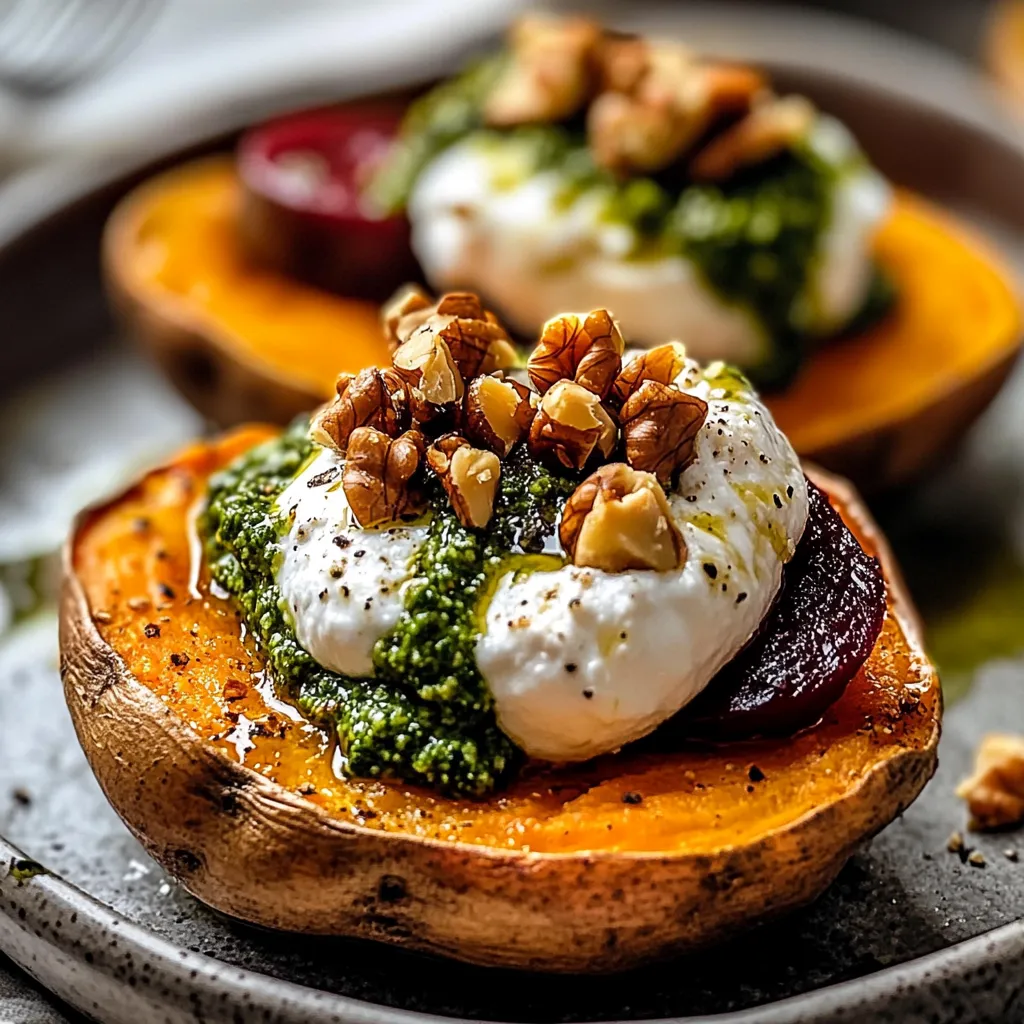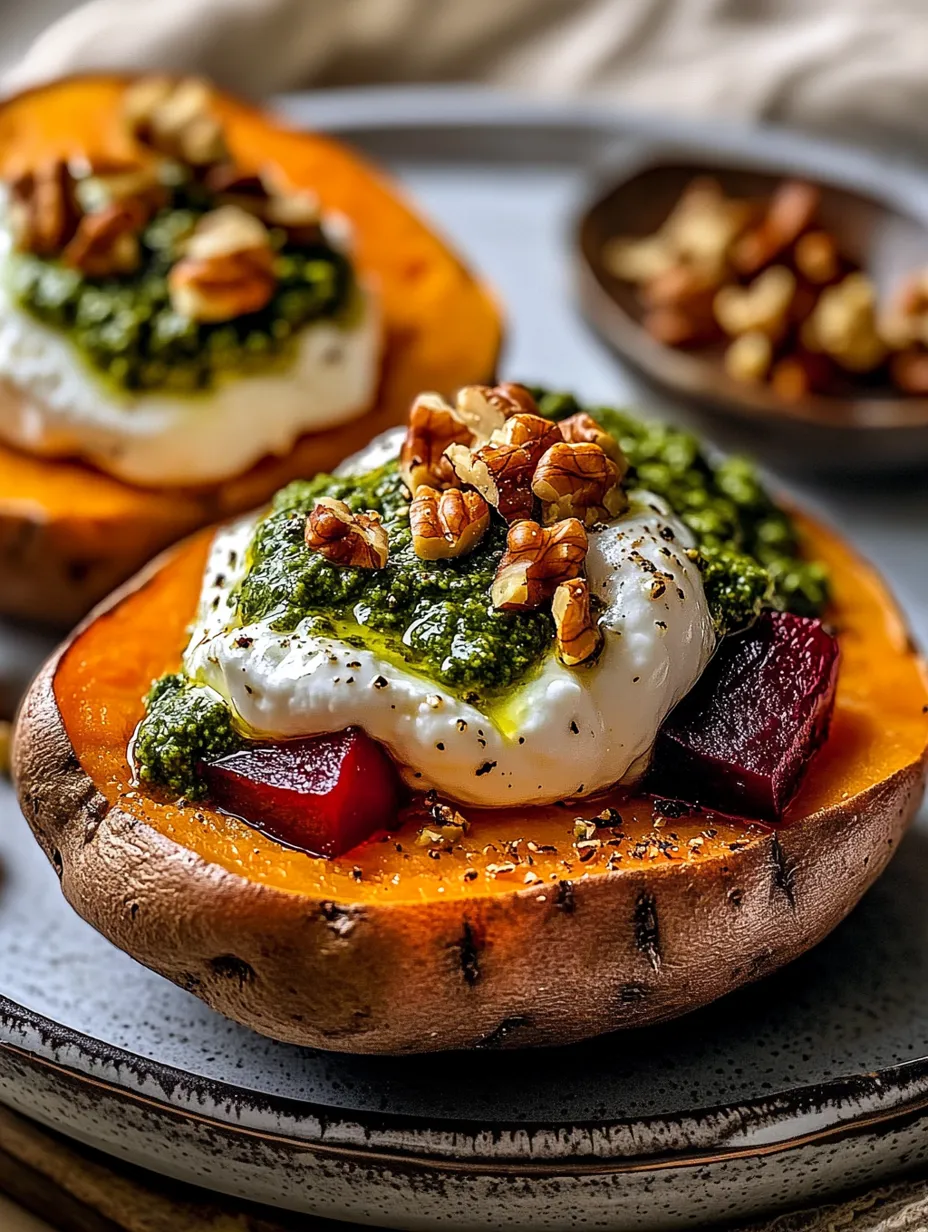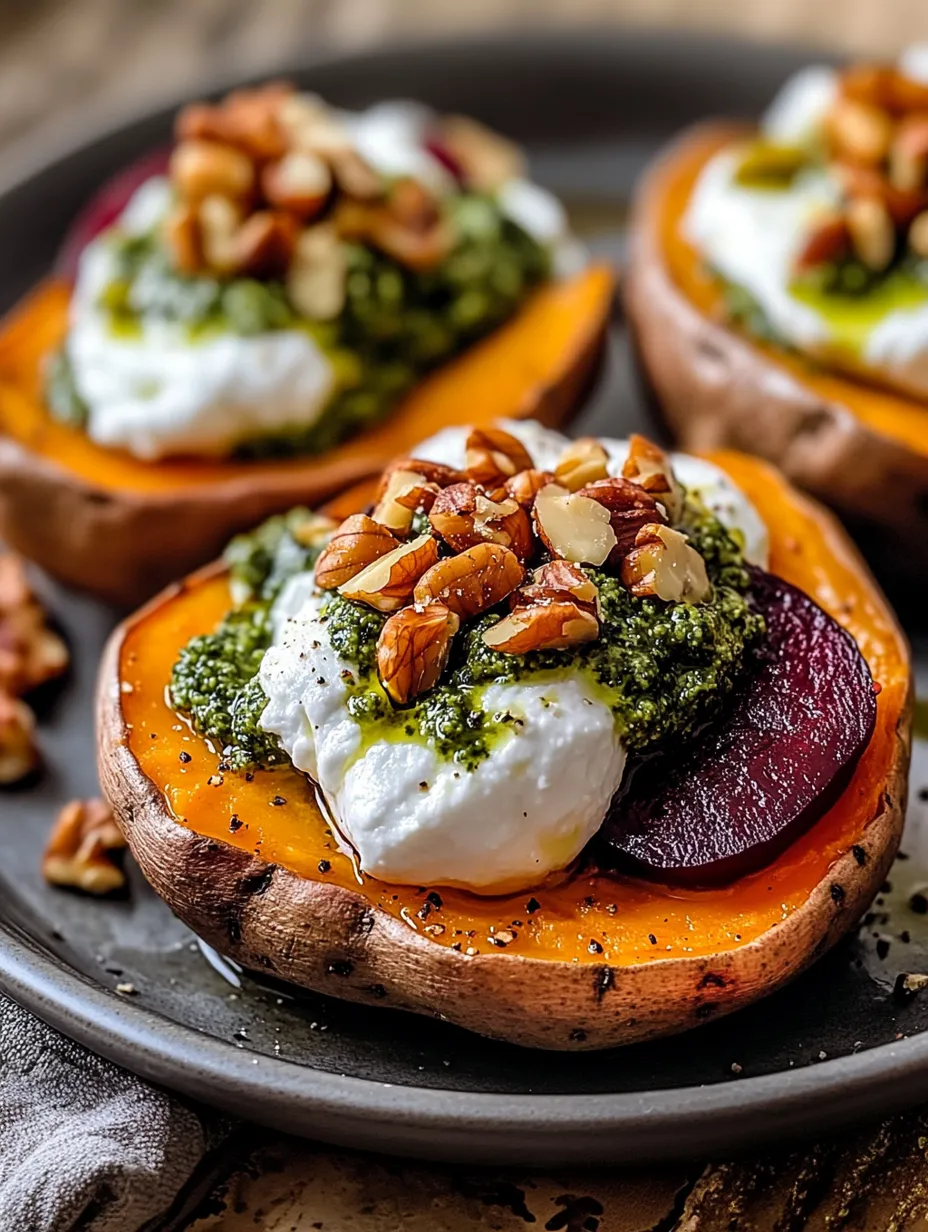 Pin it
Pin it
After discovering this incredible combination of flavors at a farm-to-table restaurant last fall, I became obsessed with recreating these Sweet Potatoes with Burrata, Roasted Beets, and Walnut Pesto at home. Through countless kitchen experiments (and a few memorable failures), I've perfected a version that now makes regular appearances at my dinner parties and holiday gatherings, consistently drawing gasps of delight when placed on the table.
Last Thanksgiving, I served this as an alternative to traditional sweet potato casserole, and my food-critic uncle, who typically turns his nose up at vegetable dishes, asked for the recipe before dinner was even over.
Essential Ingredients Guide
- Sweet potatoes develop an incredible natural sweetness when roasted properly - I've found that Japanese sweet potatoes with their purple skin and creamier flesh make this dish extra special
- Fresh beets are non-negotiable here - I once tried using pre-cooked packaged beets in a pinch, and while convenient, they lacked the concentrated earthy sweetness that comes from proper roasting
- Quality burrata makes all the difference - after experimenting with various brands, I've discovered that the freshest you can find with that perfect ratio of outer mozzarella to creamy center creates the ideal texture contrast
- Sage in the pesto brings a distinctive autumnal flavor that marries perfectly with the sweet vegetables - I learned this through trial and error after initially using only basil
 Pin it
Pin it
Creating Your Perfect Dish
Roasting TechniqueStart by cutting your sweet potatoes lengthwise and placing them cut-side down - I discovered through many batches that this creates a beautiful caramelized flat surface that's perfect for showcasing the toppings. Roasting the beets separately prevents their vibrant color from bleeding into everything else.
Pesto PerfectionToast your walnuts before blending them into the pesto - this simple step, which I embarrassingly skipped in my first attempt, elevates the nutty flavor profile dramatically. The sage-walnut combination creates a distinctly autumn-inspired taste that perfectly complements the sweet vegetables.
Assembly StrategyLayer your components with thought to both flavor and presentation - I've found that placing the sweet potatoes as the base, arranging beets around them, then tearing the burrata on top just before serving creates the most visually stunning and delicious result.
Final FlourishAdd the toasted walnut garnish at the very last minute - this ensures they maintain their crunch, providing textural contrast to the softer components. A light drizzle of high-quality olive oil right before serving adds a beautiful sheen and rich flavor.
This dish saved me during a dinner party when a vegetarian guest announced their dietary preference at the last minute - it was substantial enough to serve as their main course while working beautifully as a side dish for everyone else.
Serving Suggestions
For casual dinners, I serve this family-style on a large platter, allowing guests to help themselves. During holiday gatherings, I sometimes prepare individual portions on small plates for an elegant first course. When serving as a main dish, I often accompany it with a simple arugula salad dressed with lemon and olive oil.
Creative Variations
Sometimes I add roasted delicata squash rings for additional color and texture. During summer months, I've substituted the sage with basil and added slow-roasted cherry tomatoes for a seasonal twist. For heartier appetites, a sprinkle of crispy pancetta or prosciutto adds a savory element that meat-lovers appreciate.
Storage Solutions
The components can be prepared separately and assembled just before serving - I often roast the vegetables and prepare the pesto a day in advance during busy entertaining periods. If you do have leftovers, they'll keep in the refrigerator for up to three days, though the burrata is best enjoyed fresh.
 Pin it
Pin it
Kitchen Wisdom
- Let your sweet potatoes and beets cool slightly before topping with burrata - too hot and the cheese will completely melt rather than maintaining its creamy texture
- Invest in good quality olive oil for the final drizzle - its flavor really shines in this dish
- Don't overmix your pesto; a little texture adds character
What began as an attempt to recreate a restaurant favorite has become one of my signature dishes, requested by friends and family for special occasions. There's something magical about the combination of these humble ingredients that, when treated with care, transform into something truly exceptional.
Frequently Asked Questions
- → Can I prepare any components of this dish ahead of time?
- Yes! The walnut sage pesto can be made up to 3 days in advance and stored in an airtight container in the refrigerator. You can also roast the sweet potatoes and beets a day ahead, then reheat them in a 350°F oven for 10-15 minutes before assembling the dish.
- → What can I substitute for burrata?
- If burrata isn't available, you can substitute with fresh mozzarella, ricotta, or goat cheese. Each will provide a different flavor profile, but all pair well with the sweet potatoes and pesto. For a dairy-free version, try a cashew-based cheese alternative or simply omit the cheese.
- → I don't like beets. What else could I use?
- Roasted carrots, parsnips, or butternut squash would all be delicious alternatives to beets in this recipe. Roast them the same way, adjusting cooking time as needed until they're tender and caramelized.
- → Can I use a different herb for the pesto?
- Absolutely. While sage pairs beautifully with sweet potatoes and walnuts, you could use basil, parsley, or a combination of herbs. Rosemary and thyme would also work well, though you might want to use less as they have stronger flavors.
- → How do I prevent my sweet potatoes from burning on the bottom?
- Make sure your oven isn't too hot (stick to 400°F) and line your baking sheet with parchment paper. Flipping the sweet potatoes halfway through cooking also helps prevent burning. If your oven runs hot, position the rack in the middle rather than the lower third.
- → Is this dish substantial enough to serve as a main course?
- As presented, this would make a light main course for two people or an appetizer for four. To make it more substantial as a main, consider adding a protein like grilled chicken or chickpeas, or serving with a grain like quinoa or farro on the side.
